Have you seen the strikingly beautiful Phantom Poodle? This unique poodle variety has a hauntingly lovely two-toned coat like no other. With their enchanting blended shades and charming contrasting patches, Phantom Poodles resemble mystical spirits come to life.
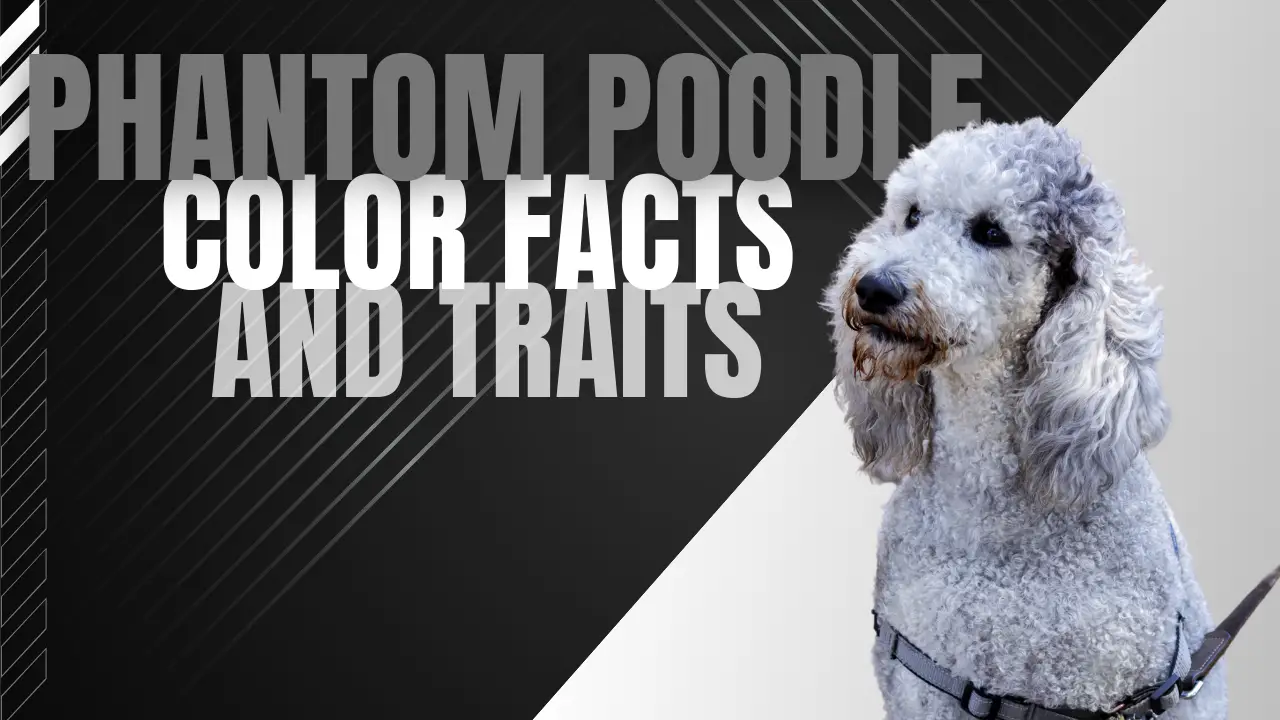
What Will You Learn? 👇
What is a phantom poodle?
A phantom poodle is a poodle with distinctive coat markings, characterized by a solid base color such as black, white, cream, silver, red, or brown, combined with another color present on specific areas of the body.
Phantom poodles are known for their lovable nature and make excellent pets, sharing many similarities with other poodles apart from their unique coat pattern.
How the Phantom Poodle Gained Popularity
The unique coat pattern of the Phantom Poodle first captured people’s attention in dog shows. Early breeders noted the occasional poodle born with striking two-toned fur and began selectively breeding to bring out this colorful trait.
Over generations of dedicated breeding, the Phantom Poodle emerged as a distinct variety. Their mesmerizing coats dazzled spectators and raised awareness of their rare beauty.

Read our Smart Poodles - Smart Tricks eBook for only $2.99
Dive into a treasure trove of engaging tricks and tips designed specifically for your poodle!
As more Phantom Poodles appeared at prestigious shows, their popularity skyrocketed. Their mystical looks and lively temperaments charmed the public. Savvy breeders marketed them as unusual yet lovable companion dogs, perfect for families seeking an eye-catching poodle.
Today Phantom Poodles remain much sought after for their style and charm. Their unique history of devoted breeding elevated them from rarities to must-have poodles.
What does a phantom poodle color look like?
While there are different colors of phantom poodle coats, it is generally acknowledged that their pattern is more solid than that of parti colored poodles. Phantoms are known for having a mix of two colors on their coat, but the background is more specific.
The solid color is usually black, white, cream, silver, red, or brown, with some of them also boasting an apricot color. This base color is present on the dog’s back, neck, head, top of the tail, and ears.
The second color, which can be any of the ones we’ve already mentioned, is usually present on the pet’s throat, chin, chest, eyebrows, sides of the muzzle, and most typically under the tail, on its paws, and inner sides of the legs. The markings do not show up as the dog ages. All phantoms are born with them.
By comparison, parti poodles have markings, but not on specific areas of their bodies. They can show up anywhere from their nether region to their muzzle, their paws, and even their back.
How do you properly groom a Phantom Poodle?
Phantom Poodles require regular grooming to stay healthy and highlight their striking coloring. Their fur must be brushed at least twice a week to remove loose hair and prevent matting. Bathing every 4-6 weeks with a moisture-balancing shampoo keeps their coat glossy.
To show off their phantom pattern, the coat is often clipped short in a puppy cut style. This requires professional grooming every 4-6 weeks. For lower maintenance owners, the coat can be kept naturally longer but still requires regular brushing to avoid tangles.
What are the different size variations of Phantom Poodles?
If you’re finding it hard to track down a poodle that suits your needs, don’t worry! You can find a Phantom Poodle in all of the same size variations. They can be as small as a toy poodle or as big as a standard poodle. If you don’t know the size of your ideal dog, take a look at the average sizes for each variety.
What is the typical temperament of a Phantom Poodle?
In general, phantom poodles are affectionate, sweet, and they love playing and spending time outdoors. However, what does make the difference between this breed and others is their capability to be in tune with their owners’ emotions.
If their human or canine family members are suffering from one reason or the other, they will also feel sad. Since they are so sensitive to stress, their health may be affected in the long run.
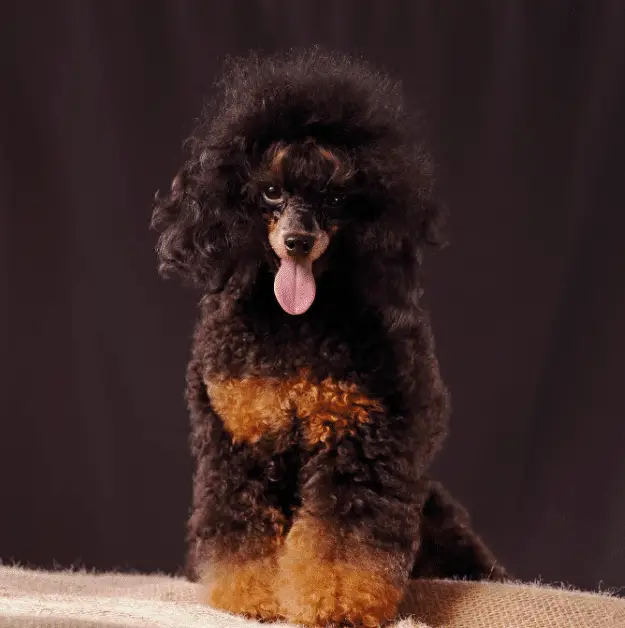
Are phantom poodles rare?
Yes. You might find several breeders in your country, but you might not find any in your state, for example.
Phantoms can be phantom standard poodle, toy phantom poodle, or miniature phantom poodle, and they are all pretty rare compared to other types of dogs. That’s what makes finding phantom poodle puppies for sale more or less challenging.
What health problems are Phantom Poodles prone to?
Some of the most common medical conditions that this breed can suffer from are the following:
- Thyroid problems (hyper- and hypothyroidism)
- Volvulus (bloat)
- Epilepsy
- Addison’s disease
- Hip dysplasia
As Phantom Poodles age, they may develop health problems due to age. By 10 years, arthritis, heart issues, and organ problems affecting the liver and kidneys are possible. Cancer risks also rise in older dogs. The average lifespan is 10 to 13 years for the breed. Regular checkups can help owners monitor a Phantom Poodle’s health and identify any emerging conditions early.
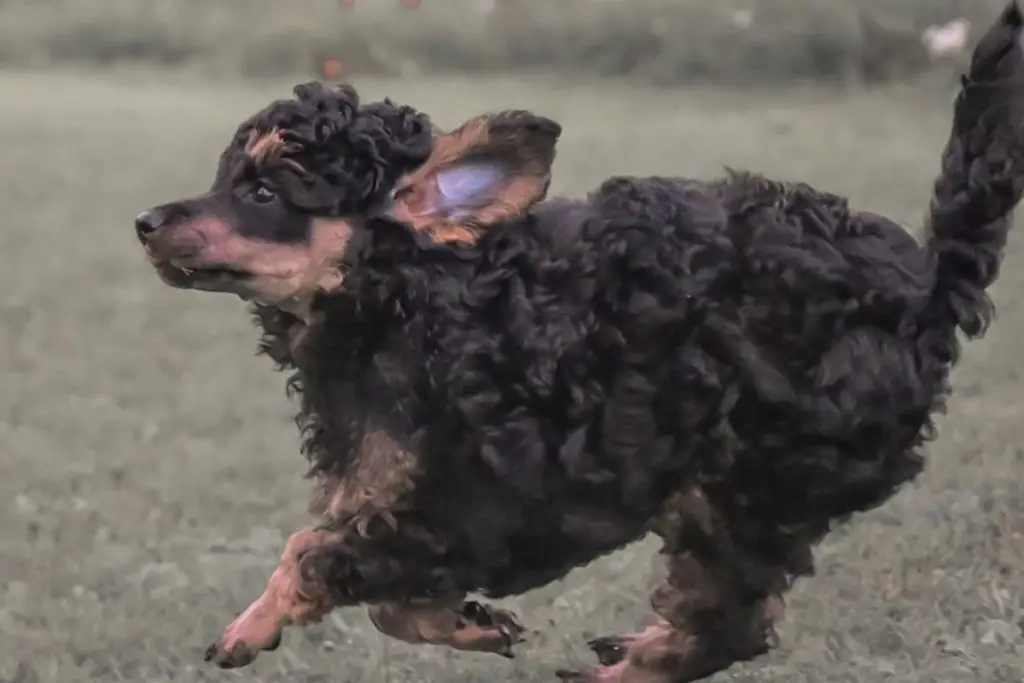
What genetic factors contribute to the Phantom Poodle coat pattern?
There are several genotypes that make up the phantom markings. The first and most important is the KY/KY gene. the purpose of this genotype is for other colors and non-solid black to be depicted. Next, we have the AT/AT gene, which is responsible for the tan coloration and spotting to occur, and finally, either the E or the EM gene, which helps in the brindle pattern of the coat and gives that trademark black mask color marking.
If you’re not sure that your dog has these genes, there is an amazing DNA test that can help identify them.
What is a chocolate phantom poodle?
A chocolate-colored poodle that belongs to this breed has a combination of brown and apricot on its coat. It’s very rare for apricot to be the base color as it usually shows up only on the markings.
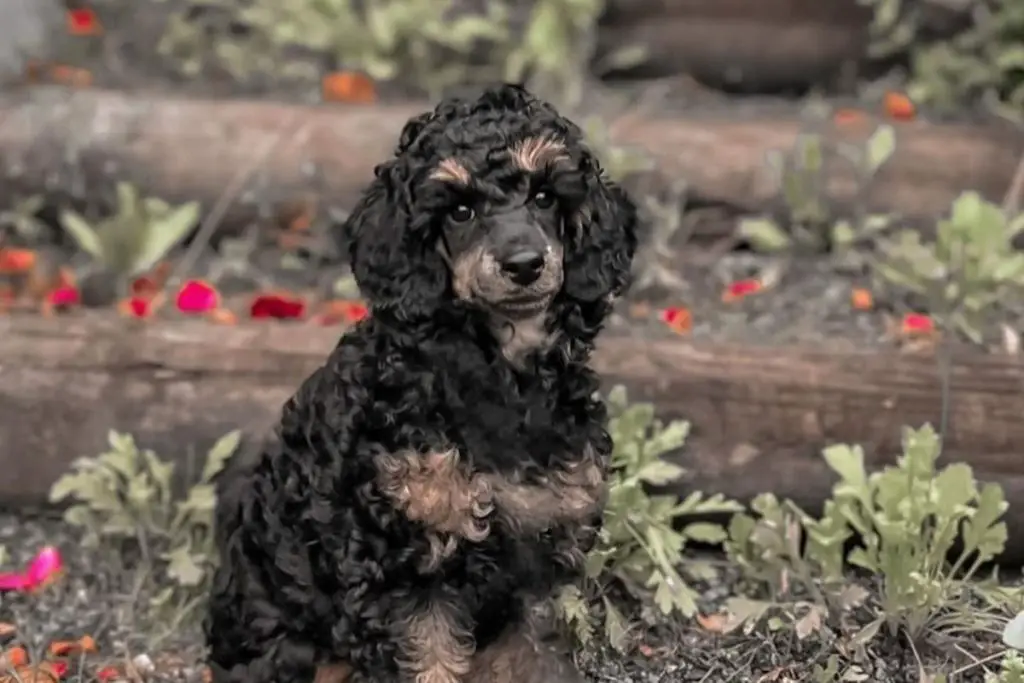
What is a sable phantom poodle?
A sable phantom poodle is a variation of color that appears in some individuals. Instead of having a homogenous coat color, even if there are two tones involved in the classic phantom poodle look, a sable phantom poodle will have one specific coat color, but the hair’s tips are going to be black.
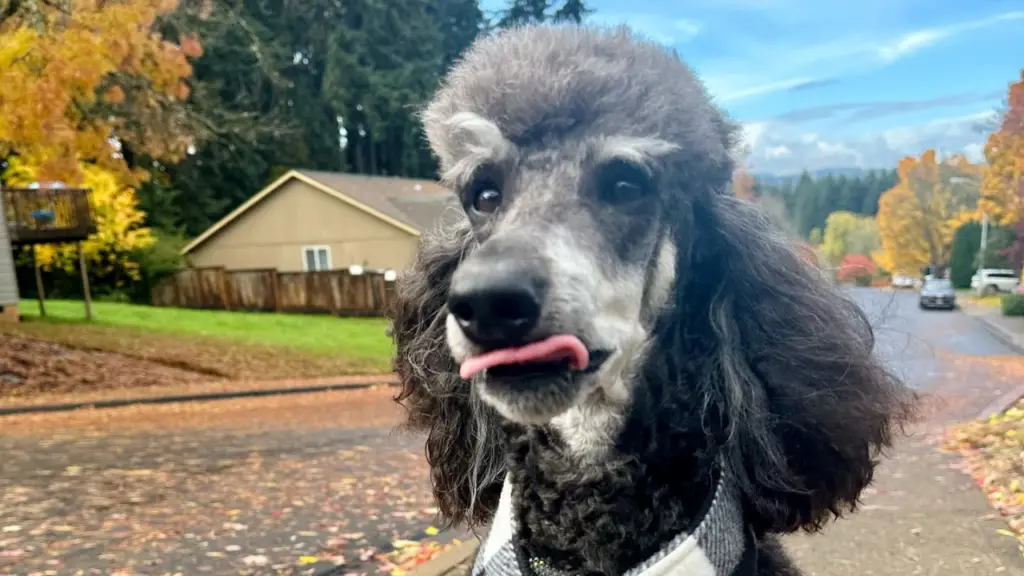
While this might not even be noticeable for areas where the coat is black anyway, it’s going to stand out in the areas where the fur is apricot or cream, for example. The base color can also be white, so if the hairs’ tips are black, it will be a noticeable trait.
Sable phantom poodles tend to be even rarer than their standard counterparts.
What is a brown phantom poodle?
The name ‘brown’ isn’t exactly correct since phantom poodles can’t be entirely brown. These phantoms are mostly chocolate, which means that the base color is brown. Therefore, the hairs on their back, neck, head, and tail are this color, but those on the markings will be apricot.
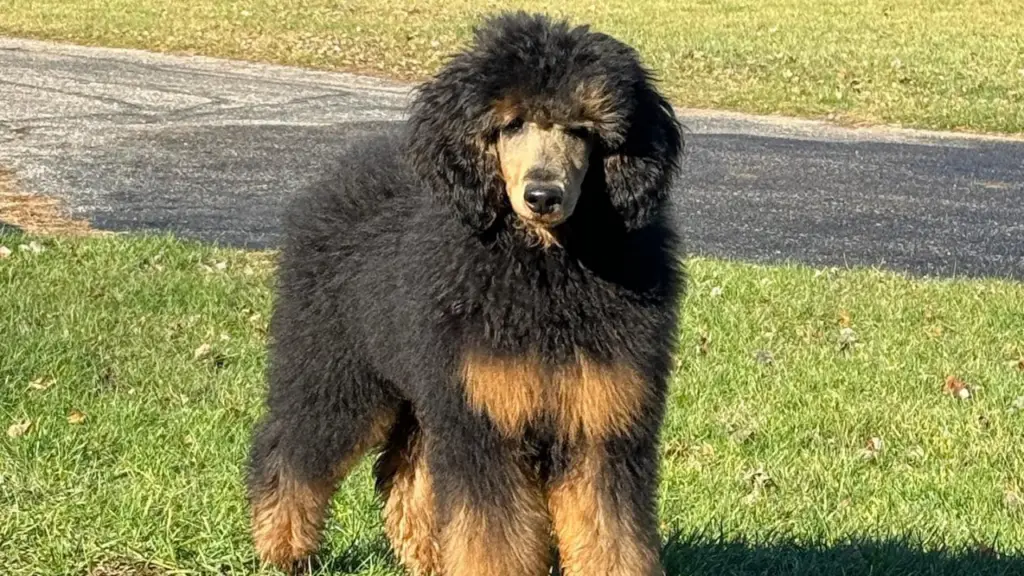
How much does a phantom poodle puppy cost?
Phantom poodle puppies generally cost between $1,000-$2,000 from a reputable breeder. Championship bloodlines or rare coloring may increase this price point. Parti poodles sometimes command a higher premium, with prices up to $3,000 per puppy.
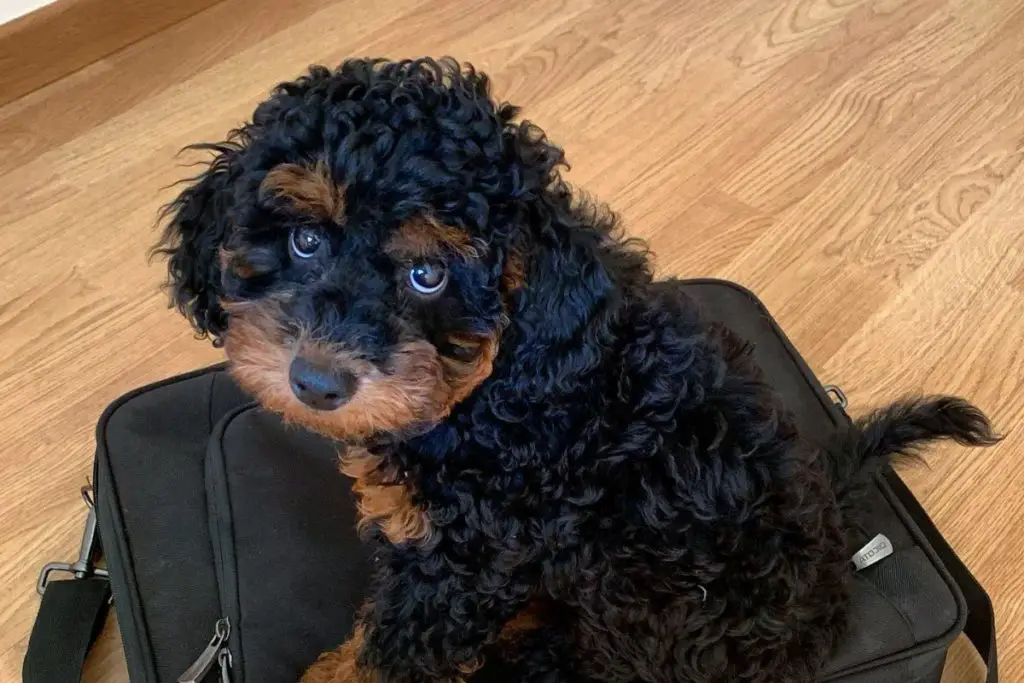
In comparison, standard poodle puppies typically range from $600-$2,000. Beyond the purchase price, prospective owners should budget for ongoing medical expenses.
Regular vet care, vaccinations, spay/neuter surgery and pet insurance can add $500-$1,000 annually on average.
Prospective phantom poodle parents should carefully research breeders and prepare their finances to provide for the puppy’s needs throughout its lifetime. Obtaining a pup from a qualified source helps ensure a happy, healthy companion.
Are phantom poodles purebred?
No. According to the AKC, phantom poodles don’t even belong to a specific breed. Moreover, phantoms are genetically related to brindle poodles, making it challenging for a breeder to predict which dogs they will get.
For example, it’s not uncommon for a pair of phantom poodles to have a litter of brindle poodles and the other way around. While in most other cases, ‘brindle’ refers to a striped coat, in poodles, it means that the puppy coat is one color (and pattern), but the hair tips are black.
How to breed a phantom poodle?
To ensure that the resulting phantom poodle puppies are going to be on par in terms of colors, you need to ensure that the parents are proper breeding material.
If you get a male and a female from the same breeder specializing in a specific color combination, you have good chances of getting puppies with that coloring. Some breeders might feel like they have all rights reserved on the colors they’ve developed, but that’s not true.
Out of all the base and markings’ colors that we have mentioned, some are fading, and some are not. Some can also lead to incorrect pigment on the hair points of the poodle puppy.
Several examples of fading colorings are blue, silver, silver beige, or chocolate. That is why, if you want to get a regular coloring and pattern in the litter, you shouldn’t mix reds, apricots, or browns with the firstly mentioned colors. You may mix browns and reds with blacks, for example, as they eliminate fading and make the poodle colors more intense — but not with silver.
Phantom Poodles vs. Other Poodle Varieties
While all poodles share the same ancestry, Phantom Poodles stand out due to their striking two-tone coat. Other popular varieties include solid color poodles like reds, blacks, or apricots. Parti poodles have colorful patches scattered across their fur rather than focusing on certain areas. Beyond coat patterns, all poodle types tend to be highly intelligent, energetic, and easily trained.
Have you owned or encountered a Phantom Poodle?
We’d love to hear your real-life stories and anecdotes about these strikingly patterned poodles. Please share your experiences in the comments section below – what is your Phantom Poodle’s personality like? Any amusing antics or tricks they enjoy? How do people react when they see your unique poodle?
Comment below so we can all enjoy your personal phantom poodle tales! Reading real testimonials is so helpful for anyone considering adding one of these beauties to their family.
Marko is the founder and author at PoodleHQ, where he blends profound expertise with formal training in Animal Behavior and Canine Genetics. With multiple generations of poodles under his care, he’s a breed connoisseur, honored with the Canine Care Excellence Award and lauded by the International Pet Enthusiasts Association.

